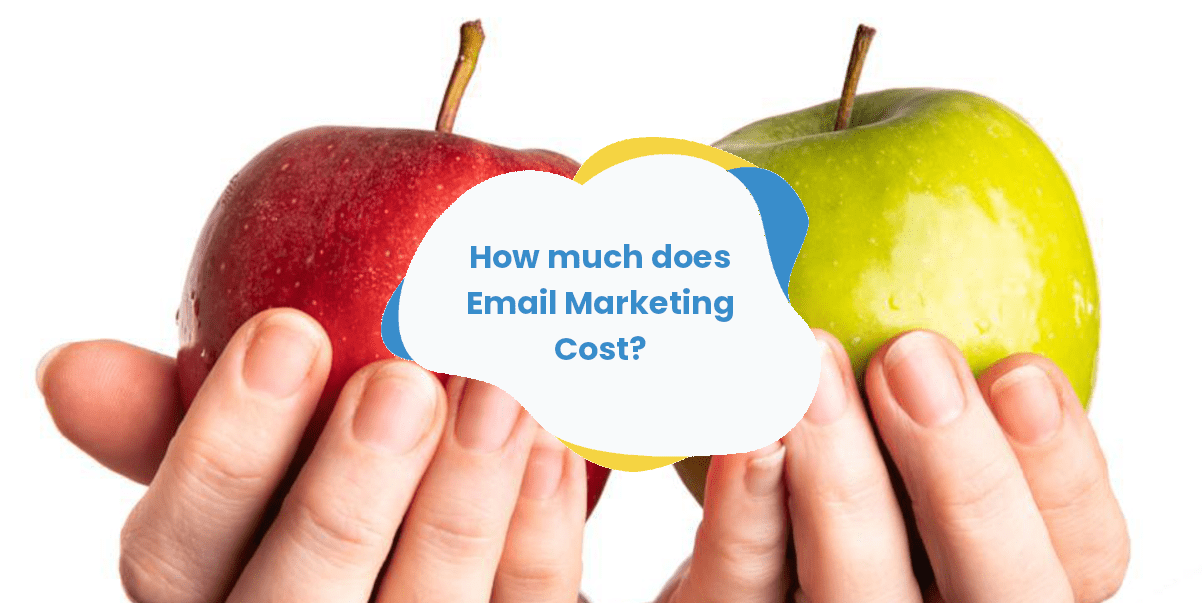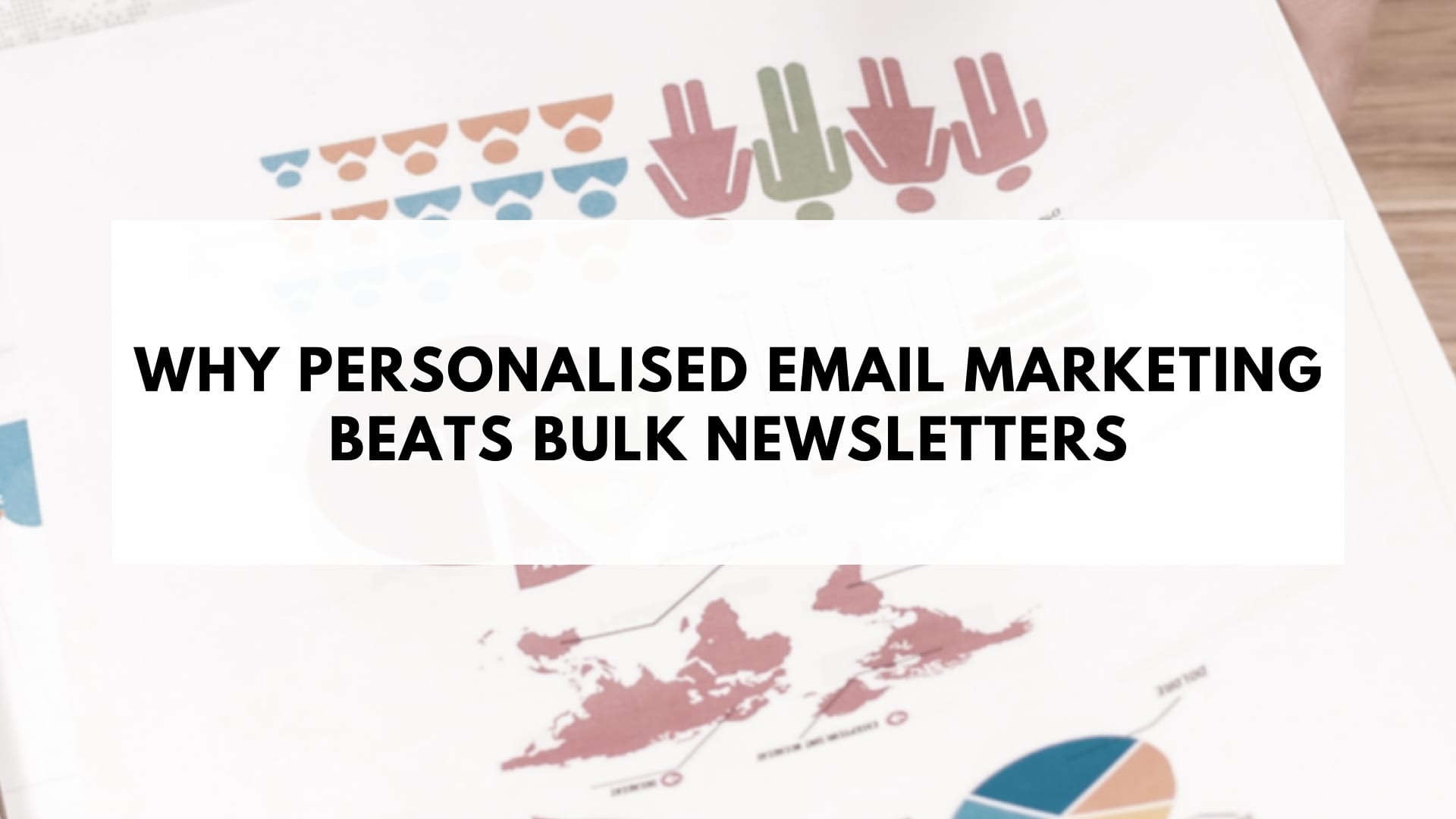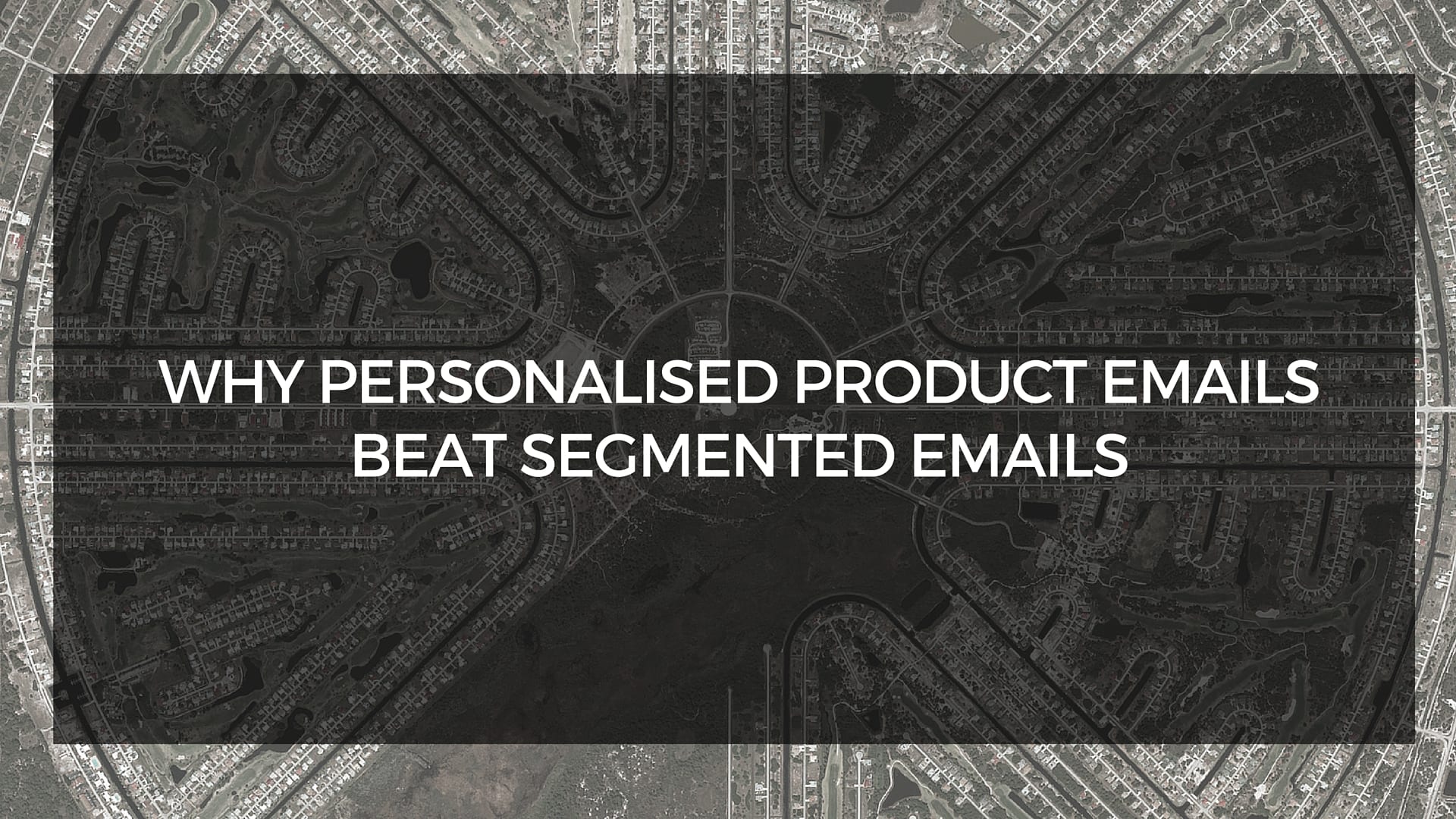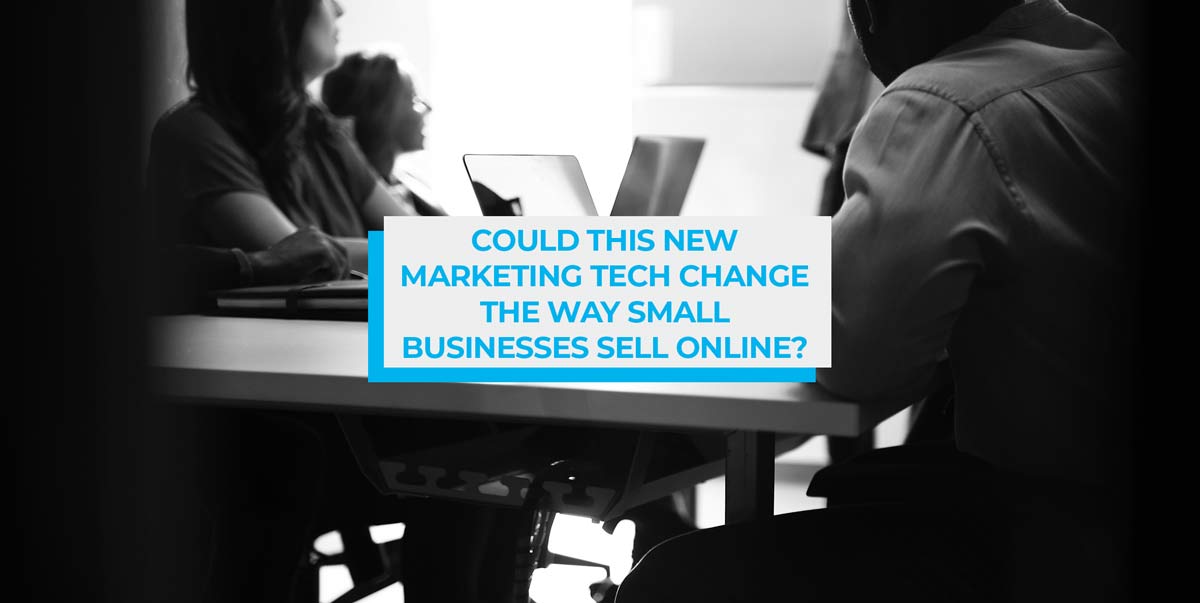Email Marketing is, without exaggeration, one of the highest converting marketing channels for eCommerce stores.
It’s great at converting visitors into first-time buyers, it’s really good at building a long-term relationship between your brand and your audience, and it’s simply amazing at getting past customers to purchase again in your store.
But if you’ve looked at your eCommerce store’s bill even once, you also know that its cost can be a close cousin of the cost of your store itself. No matter if you are a big brand or a small business, if you do not know how to tame it, the cost of email marketing services can leave a hole in your wallet.
So why is email marketing so expensive? And why is the price different for every single email marketing app out there?
Why is Email Marketing so Expensive?
Sending emails represents a hard cost for the email app that you will use as they are messages with data sent server to server. Eventually, this hard cost will trickle down to your cost for using their email marketing platforms.
And on that aspect, the correlation is clear: The more emails you’ll send, the higher the cost will be for your email app.
As a result, it’s no wonder that all email marketing services base their pricing on the number of subscribers in your email list and the number of emails sent. A merchant who’ll send an email campaign once per week to 2,000 subscribers will not cost a lot, while a merchant who’ll send one email per day to 100,000 subscribers will be really expensive.
Other elements can also impact the cost that you represent for these apps, such as the number of series of automated emails that you have set up, the number of segments updating every hour, which all represent a cost for their servers.
Email marketing apps can decide to take these elements into account when setting up their pricing plans, such as Omnisend, which prevents stores from creating more than 5 segments on their lowest plan, or MailChimp, which allows only one automated email per automation in their essentials plan.
At the end of the day, all email service providers created their pricing plans by considering the costs listed above. The key to optimizing your own email marketing cost comes down to understanding what each of these apps offers, and what they mean when they use different terminology in their plans descriptions.
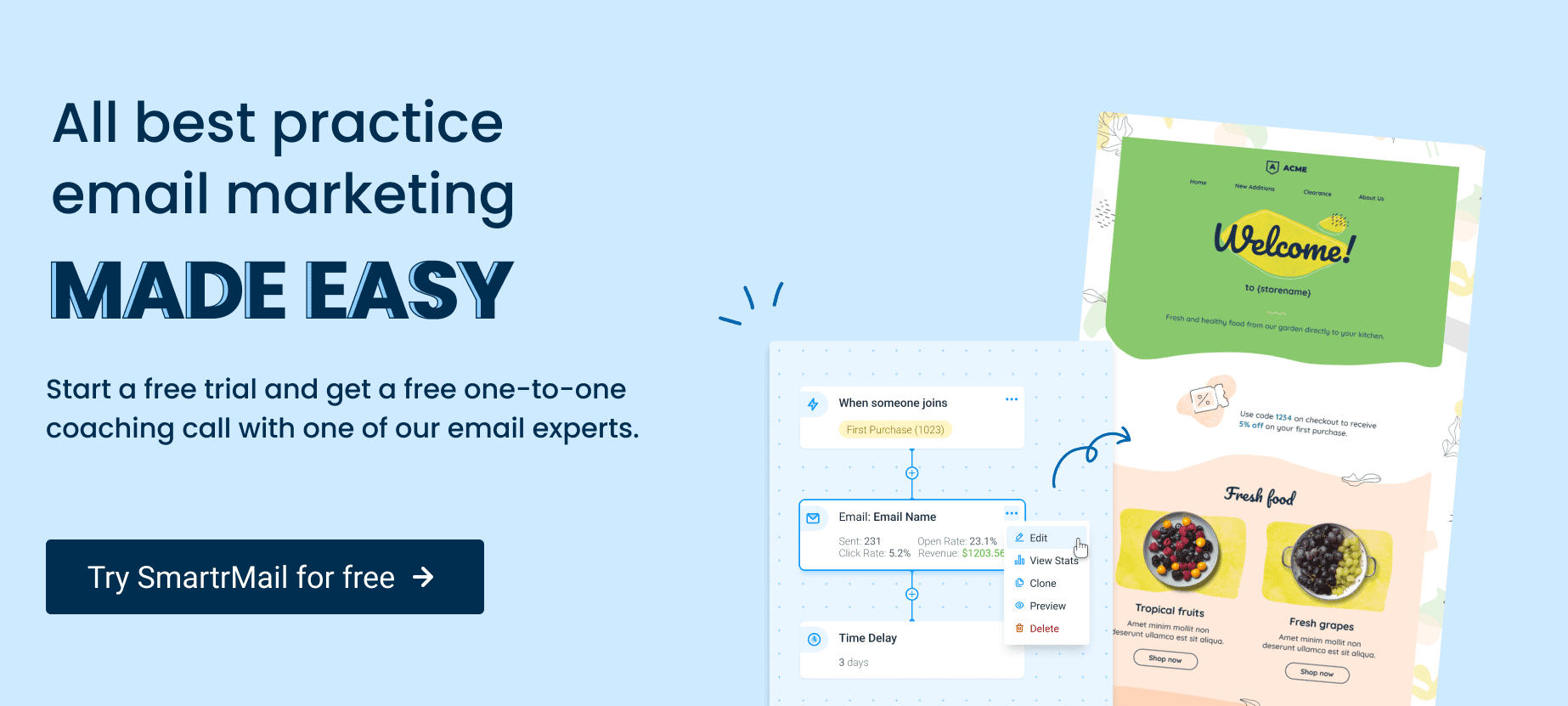
So what should I be looking for?
Here are some key points that merchants should be aware of when analyzing the cost of different email marketing apps:
Contacts VS Subscribers
As you know, email marketing can only reach your opted-in subscribers, meaning, contacts who agreed to receive email marketing by subscribing to your list via your pop-up, landing page, footer form, or checkout form.
As a result, one could think that all email marketing apps will charge you based on the number of opted-in subscribers that you have in your list, and not the number of “contacts”.
Well, think again!
A surprisingly high number of email apps take advantage of merchants by counting their number of “contacts” instead of counting their number of opted-in/reachable subscribers. To name only a few, you’ll find that it’s the case for MailChimp, Klaviyo, and Omnisend. Even if your contact is not subscribed to email marketing and can’t receive email marketing campaigns, they will be counted towards the number of email addresses in your account, and will eventually increase your monthly bill.
Thankfully, not every email app is deceiving: SmartrMail, Moosend and AWeber count only your active subscribers, meaning, only people who specifically subscribed to your email marketing campaigns.

Unique subscribers VS subscribers
Another important element to consider is if the email app that you use counts each subscriber only once, or multiple times, depending on the presence of this subscriber in more than one of your lists.
Quite famously, MailChimp will count the same unique email address multiple times if this email address exists in more than one of your audiences.
This means that if you have an audience linked to your Shopify store, and another audience linked to your pop-up form, and that the same subscriber signed up via both methods, MailChimp will count this subscriber twice, eventually skyrocketing the number of “billable contacts” existing in your account.
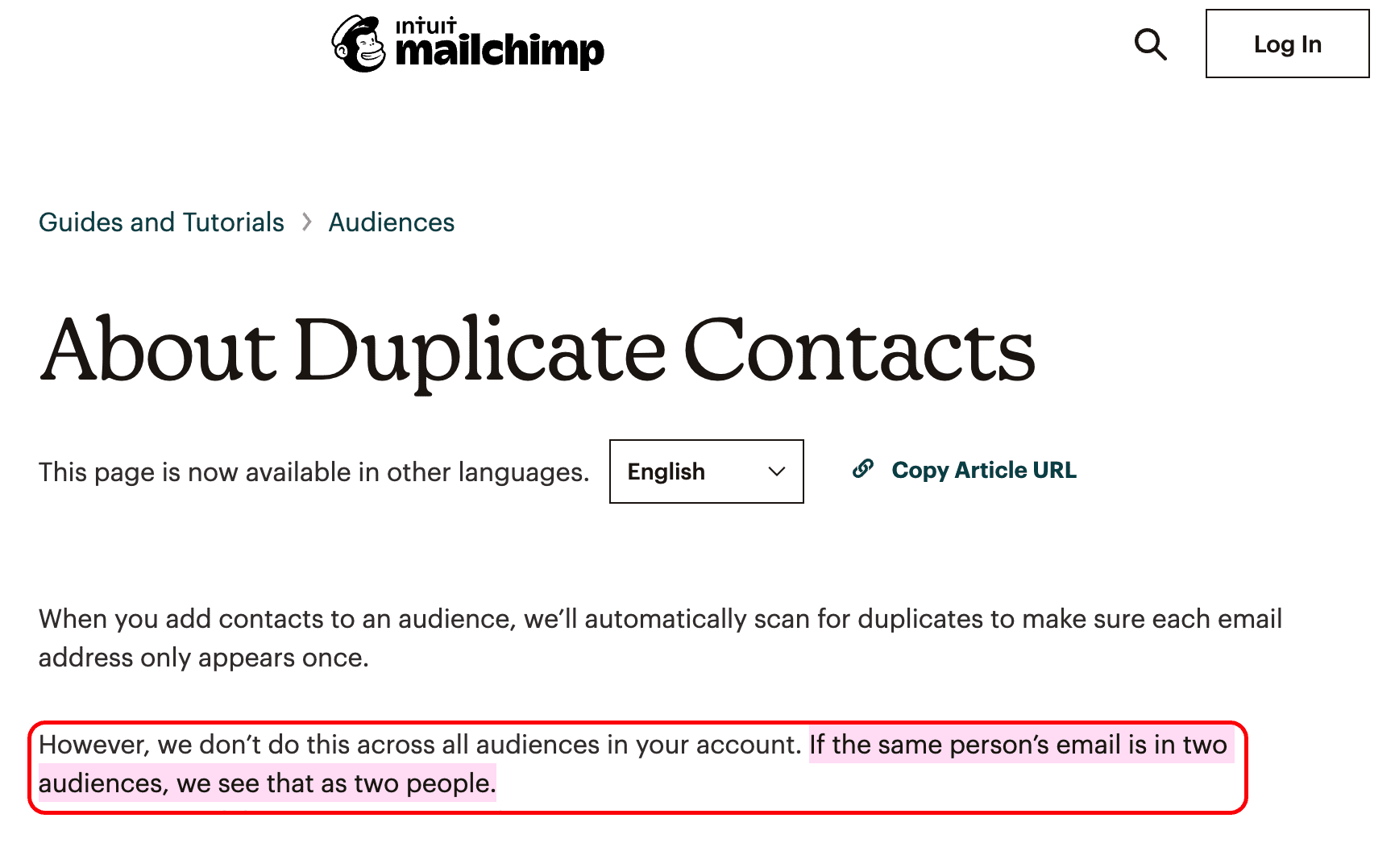
At SmartrMail we’re seeing everyday merchants who used to pay for 30,000 contacts with MailChimp, when in fact the same 8,000 unique active subscribers existed in 3 different lists. Eventually, it means that the same subscribers would cost $300 on MailChimp, and $71.50 on SmartrMail.
Pricing tiers VS Per subscriber pricing
The following story will most probably ring a bell: A visitor comes on your website, sees your pop-up, and signs up. He is the 10000th subscriber in your list.
Congratulations! What a milestone!
Except that now, your pricing just went from $49 per month to $79, all because one single subscriber signed up.
If you read between the lines, you’ll actually find out that the pricing of your provider is based on tiers, meaning that the price will not change from 8,000 subscribers to 9,999 subscribers, and it will increase all at once as soon as you’ll reach the following tiers (10,000 – 11,999 subscribers; 12,000 – 13,999 subscribers; etc.).
This means that, right now, you are paying for the equivalent of 11,999 subscribers, even if you have only 10,000 active subscribers. Again, you’ll find this type of system with renowned email apps such as MailChimp, Omnisend, Klaviyo, and AWeber.

Thankfully, not every email app uses this type of stratagem. Solutions such as SmartrMail count each subscriber one by one, which means that when you go from 9,999 to 10,000 subscribers, you’re only changing your price from $86.49 to $86.50.
Plan limitations
Finally, email marketing softwares can include limitations on several different elements, such as the sending limit.
Even on their highest plans, MailChimp will limit you to 12 emails per subscriber per month, whereas Klaviyo will draw the line at 10 emails per subscriber per month. Other solutions like Omnisend and SmartrMail do allow unlimited sending on their higher plans, regardless of the number of active subscribers in your list.
A few providers also limit the number of automated emails and segments that can be set up, even if they are known to be the best way to reach subscribers effectively. For example, Omnisend will only allow 20 segments on their Standard plan, while MailChimp will only allow single steps automations on their Essentials plans. Other solutions like SmartrMail and Moosend allow an unlimited number of segments and automations, even on their free plan.

Sign-up to our newsletter and receive a 30% discount on your first 6 months with SmartrMail
Some evergreen tactics
Thankfully, there are best practices that can help you manage your email marketing campaign cost:
Clean up your subscribers’ list
No matter your list size, sending emails over and over to subscribers who do not open these emails means that you are overpaying for contacts who aren’t focused on you right now. If some subscribers haven’t opened any of your emails in the last 365 days, haven’t purchased in the last 365 and subscribed more than 365 days ago, it is time to let go and focus on the ones who are reading your emails.
This will optimize your email marketing costs, but even better, you’ll improve your email campaign’s deliverability, meaning that your email campaigns will be more likely to hit the right inbox instead of reaching spam folders.
In SmartrMail, you can easily clean up your subscribers’ list by using our Smart Segment feature with settings such as the ones in the picture below:
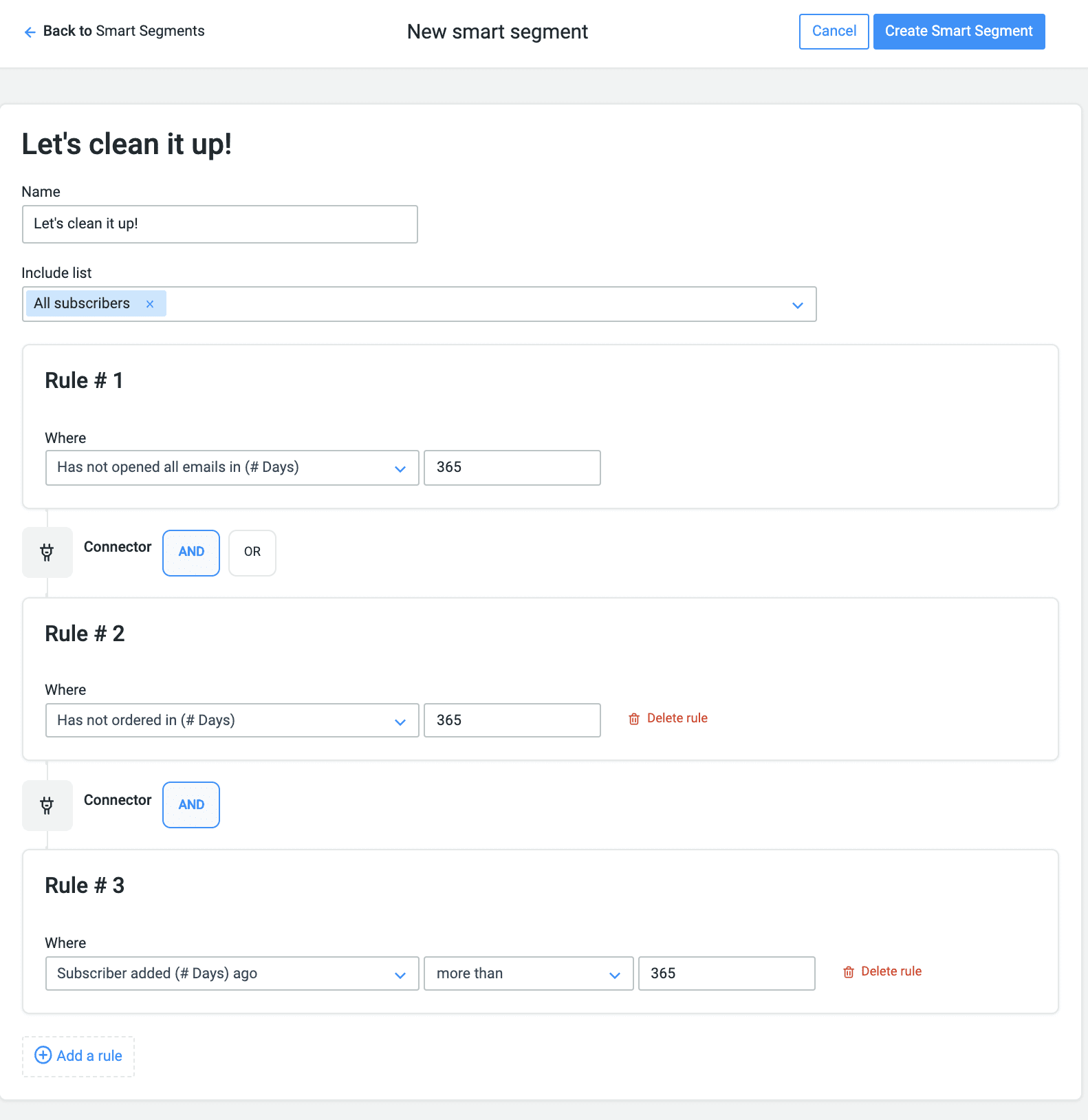
Get experts to optimize your account
It’s ok to rely on a little help once in a while. As you might have guessed, investing $1000 on a great setup can save you $5000 in the long run. Every single email app works with amazing email marketing agencies that know how to optimize email marketing costs.
If you do not want to spend thousands on experts paid on an hourly rate, consider specialized email marketing agencies such as Just Email and their flat + transparent services.
Switch to the right email app
If you read the “So what should I be looking for?” of this article, chances are you have also looked at your current email marketing app and discovered that you are paying for not-subscribed contacts, some of whom are being counted more than once, with a tier-based app charging you for 4999 subscribers even though you only have 3002.
If that’s the case, it might be time to switch to an email marketing app that doesn’t trick you this way. Switching is actually quite easy as most email apps offer to take care of the leg work for you (moving over your existing subscribers, your existing email design, and even your existing email automations).
As you might have guessed, this is precisely what SmartrMail offers, so if the workload involved with the migration is holding you back, just hit our customer support team on the bottom right corner of this page to book your free migration!
Conclusion
So in the end, how much does email marketing cost?
The answer is, not that much if you understand how your email marketing app pricing works, and if you correctly manage your subscribers’ list.
Ultimately, the cost of your email campaigns will have a great impact on your return on investment, which is why it is important to pick the email marketing app that won’t use any scheme to greatly increase the number of subscribers considered for billing purposes.

